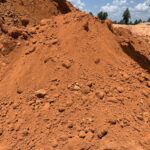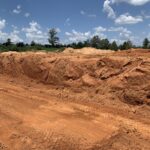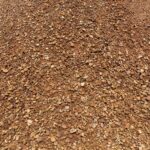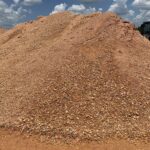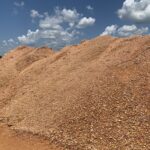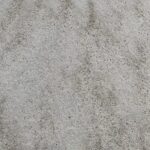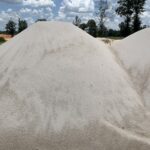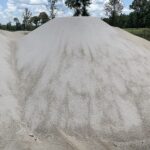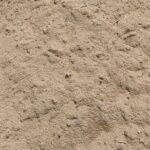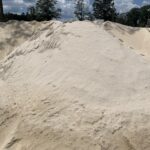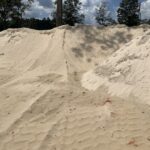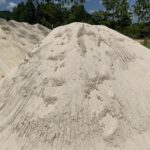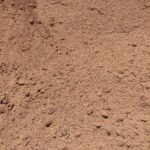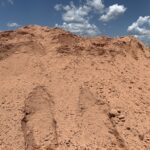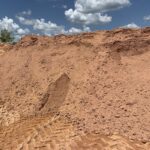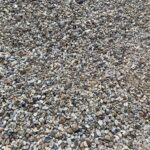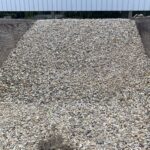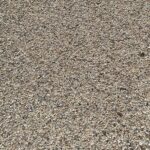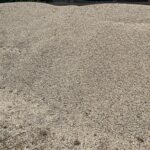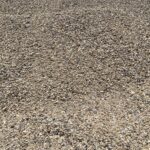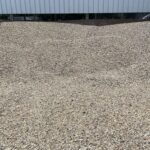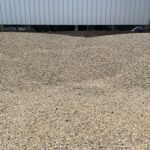We deliver consistent, high-quality aggregates for every job, big or small.
Materials
- Fill Dirt
- Shook Rock
- Concrete Sand
- Fill Sand
- Mason Sand
- Shook Sand
- Oversized Gravel
- Pea Gravel
- Wash Gravel
Fill Dirt is unscreened soil that’s primarily made up of subsoil, sand, clay, and small amounts of organic material. Unlike topsoil, fill dirt is not meant for planting—it’s used for its stability and compaction qualities. Because it doesn’t shift or settle as much, it’s the go-to material for creating a solid foundation in construction and landscaping projects.
Best Uses for Fill Dirt:
Filling in holes, low spots, and uneven ground
Building up areas for construction or landscaping
Creating stable bases for roads, driveways, and building pads
Backfilling around foundations, retaining walls, or other structures
Shaping land for proper drainage and erosion control
Shook Rock is a large, rough stone material that’s produced as a byproduct of the screening and crushing process. Unlike smaller, more uniform gravel, shook rock consists of bigger, jagged pieces that provide superior strength and stability. Because of its size and durability, it’s ideal for heavy-duty applications where erosion control, drainage, or a strong base is required.
Best Uses for Shook Rock:
Base material for roads, driveways, and construction pads
Riprap for creek beds, ponds, and shorelines to prevent erosion
Drainage control in ditches and culverts
Stabilizing muddy or soft ground areas
Foundation support for large-scale construction projects
Concrete Sand is a coarse, washed sand made from crushed stone. It features angular grains that lock together, creating a stable base material that also allows water to drain effectively. Its gritty texture makes it an ideal aggregate for mixing with cement to produce strong, durable concrete, but it’s also versatile enough for a wide range of construction and landscaping projects.
Best Uses for Concrete Sand:
Mixing with cement, gravel, and water to make concrete
Creating a stable base for pavers, patios, and walkways
Providing bedding for pipes and underground utilities
Improving soil drainage in landscaping applications
Leveling or filling low spots before construction projects
Fill Sand is a coarse sand material made up of fine rock particles that compacts well and allows for excellent drainage. Unlike fill dirt, which is used for stability, fill sand is often chosen when water flow or leveling is important. Its gritty texture makes it easy to spread and compact, making it a versatile option for both residential and commercial projects.
Best Uses for Fill Sand:
Leveling and filling low areas in yards or construction sites
Creating a base for patios, walkways, and paver projects
Providing excellent drainage for septic systems and utility trenches
Backfilling around pipes and underground utilities
Mixing with soil to improve drainage in landscaping applications
Mason Sand is a fine, clean sand with smooth, uniform grains that give it a soft texture and easy workability. It’s carefully washed and screened to remove impurities, making it ideal for projects where appearance and smooth finishes matter. Often called “white sand” or “beach sand,” mason sand is versatile and commonly used in masonry work, landscaping, and recreational areas.
Best Uses for Mason Sand:
Mixing with mortar for brick, block, and stone masonry
Creating smooth bases for patios, pavers, and flagstone
Topdressing for lawns and leveling yards
Use in playgrounds, sandboxes, and recreational areas
Decorative landscaping and beach-like features
Shook Sand is a coarse, unprocessed sand that comes from screening natural deposits or the byproduct of gravel production. It has a mix of grain sizes, making it less uniform than mason or concrete sand, but very useful for bulk fill and base applications. Because it compacts well and provides good drainage, shook sand is a practical and cost-effective material for construction and landscaping needs.
Best Uses for Shook Sand:
General fill material for large projects
Base layer for roads, pads, and driveways
Backfilling around foundations and utility lines
Improving soil drainage in low-lying areas
Stabilizing muddy or soft ground before building
Oversized Gravel consists of large, irregularly shaped stones that are bigger than standard gravel. Its size and durability make it excellent for heavy-duty applications where stability and strength are critical. Oversized gravel provides superior drainage, resists erosion, and creates a sturdy foundation for construction and landscaping projects.
Best Uses for Oversized Gravel:
Base layer for roads, driveways, and construction pads
Erosion control on slopes, ditches, and drainage areas
Stabilizing soft or muddy ground
Riprap for shorelines, ponds, or creek beds
Foundation support for heavy equipment and structures
Pea Gravel is a small, rounded stone typically about the size of a pea, known for its smooth texture and natural range of colors. Because it’s easy to spread, comfortable to walk on, and visually appealing, pea gravel is a popular choice for both functional and decorative landscaping. Its excellent drainage properties and versatility make it suitable for many residential and commercial uses.
Best Uses for Pea Gravel:
Walkways, pathways, and garden borders
Ground cover for flower beds and landscaping accents
Drainage solutions around foundations or in French drains
Base material for patios, stepping stones, and pavers
Decorative accents for water features, fire pits, or outdoor seating areas
Wash Gravel is a clean, screened stone material that has been thoroughly washed to remove dust, clay, and other fine particles. The result is a smooth, attractive aggregate with excellent drainage properties and a wide range of uses. Its cleanliness and consistent size make it a preferred choice for both construction foundations and decorative landscaping projects.
Best Uses for Wash Gravel:
Driveways and walkways for a clean, finished look
Drainage applications, including French drains and septic systems
Base material for patios, slabs, and concrete work
Decorative ground cover in landscaping and garden beds
Mixing with sand and cement for durable concrete
